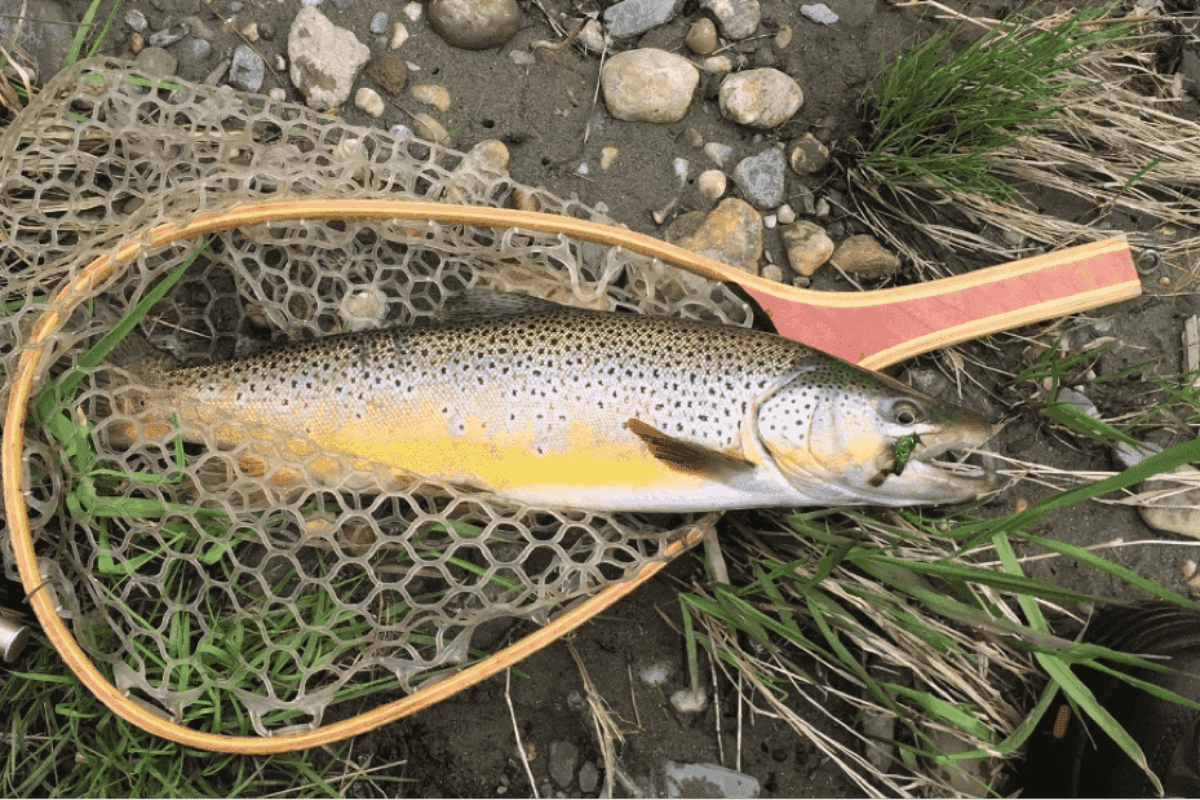Each fall all of Montpelier High School’s students spend a morning participating in a community service event. This year the students helped with a conservation project involving the planting of trees and willow whips along the banks of the Dog River. As a member of the local chapter of Trout Unlimited (the “MadDog” chapter) I volunteered to help the students with the plantings at one site on the river.
The Dog rises in Roxbury and flows north for approximately 15 miles through Northfield and Berlin before joining the Winooski just below Montpelier. It is one of just a handful of decent sized streams (by Vermont standards) managed by the Fish & Wildlife Department for wild trout—it has not been stocked since 1991. It has a reputation for holding large Brown trout that are hard to catch—something I can readily attest to, although I did luck out this past May and land (and then release) the nice Brown pictured below.
 Water quality is a big issue in Vermont. Lake Champlain is suffering from too much phosphorus getting into the lake and there have been outbreaks of toxic blue-green algae. Most of the phosphorus is getting into the lake via the rivers that flow into it. The Winooski is one of the larger rivers that empty into the lake. Since the Dog River is a tributary of the Winooski its water ends up in the lake.
Water quality is a big issue in Vermont. Lake Champlain is suffering from too much phosphorus getting into the lake and there have been outbreaks of toxic blue-green algae. Most of the phosphorus is getting into the lake via the rivers that flow into it. The Winooski is one of the larger rivers that empty into the lake. Since the Dog River is a tributary of the Winooski its water ends up in the lake.
The Dog flows through nice farmland that has sandy soils that are highly erodible. Phosphorus is a plant nutrient and is present in manure and used in chemical fertilizers. Since phosphorus binds to soil particles if the soil erodes into a stream the phosphorus gets into the water. This impact can be mitigated if there is a decent buffer of shrubs and trees along the banks of a river—the trees and shrubs reduce erosion and filter nutrients out of storm water run-off.
 All of this was explained to the kids from Montpelier High School when they assembled in a field next to the river after disembarking from the buses that brought them. We then walked across the field to the area next to the river where we would plant the clumps of alders and willow whips that had been brought to the site. It was early and a bit chilly, and the grass was wet with dew. I was with a group of about 35 students, and they made short work of getting the plant material into the ground. It was not too long before some of the kids were skipping rocks in the river. After a while school staff rounded everybody up and we walked back across the field to where the buses were waiting. Another contingent joined us and there was a group photo.
All of this was explained to the kids from Montpelier High School when they assembled in a field next to the river after disembarking from the buses that brought them. We then walked across the field to the area next to the river where we would plant the clumps of alders and willow whips that had been brought to the site. It was early and a bit chilly, and the grass was wet with dew. I was with a group of about 35 students, and they made short work of getting the plant material into the ground. It was not too long before some of the kids were skipping rocks in the river. After a while school staff rounded everybody up and we walked back across the field to where the buses were waiting. Another contingent joined us and there was a group photo.
The morning’s activity was a small thing. But, given Vermont’s water quality challenges every bit helps. More importantly, the kids understood why they were doing what they did. In the long run that is what counts the most.


